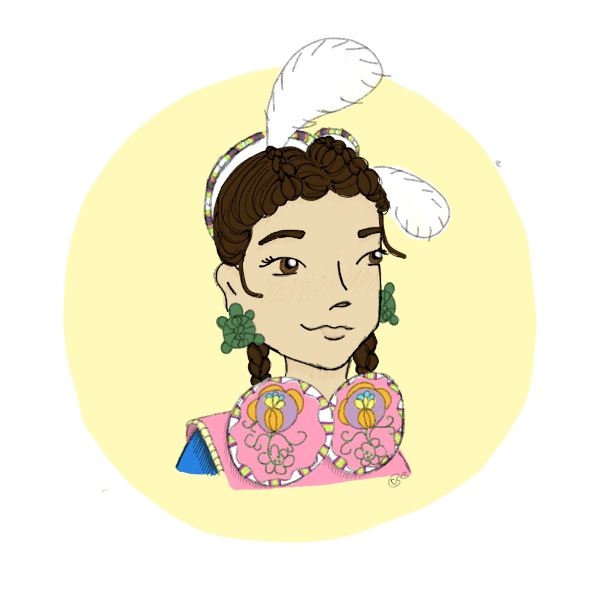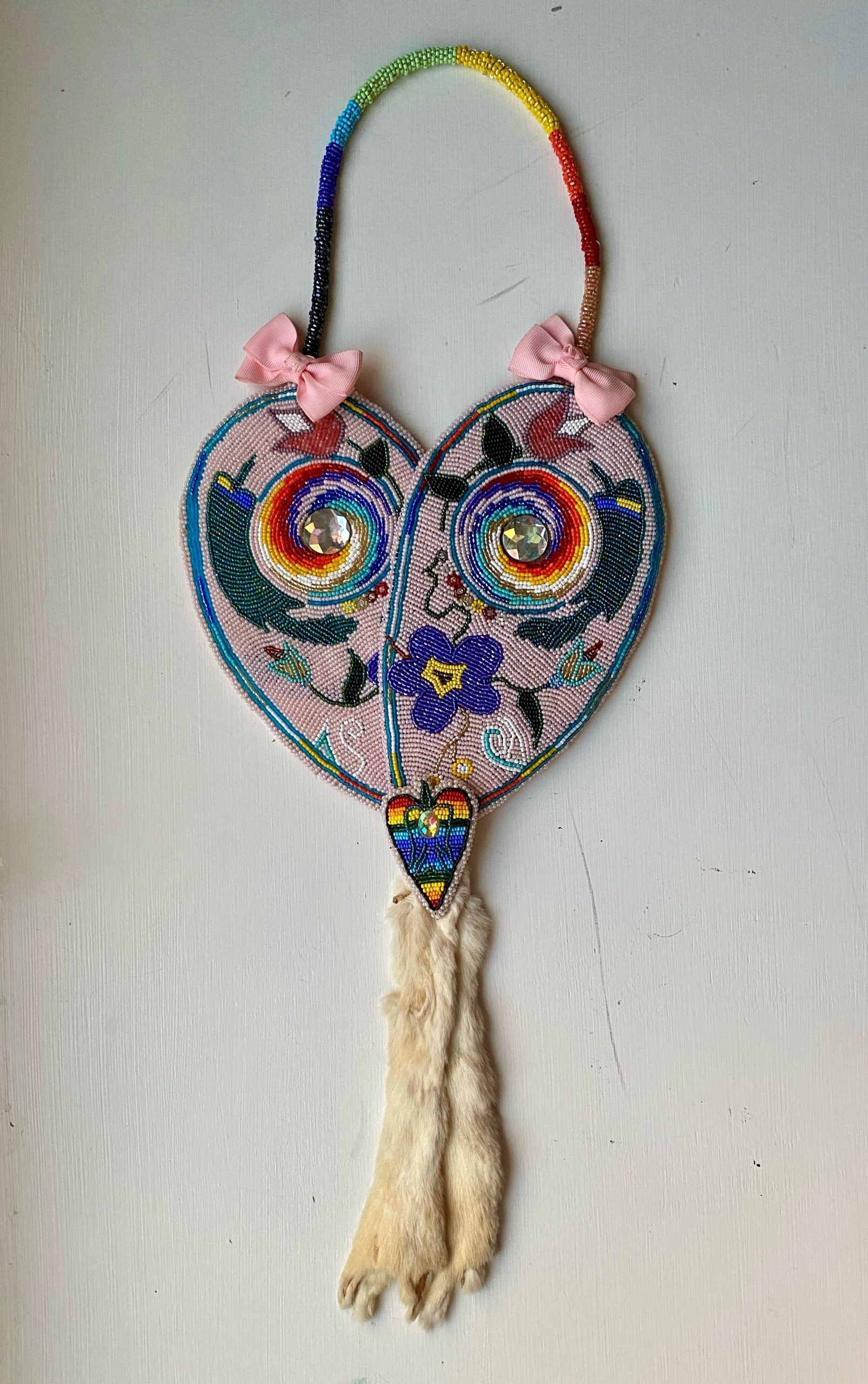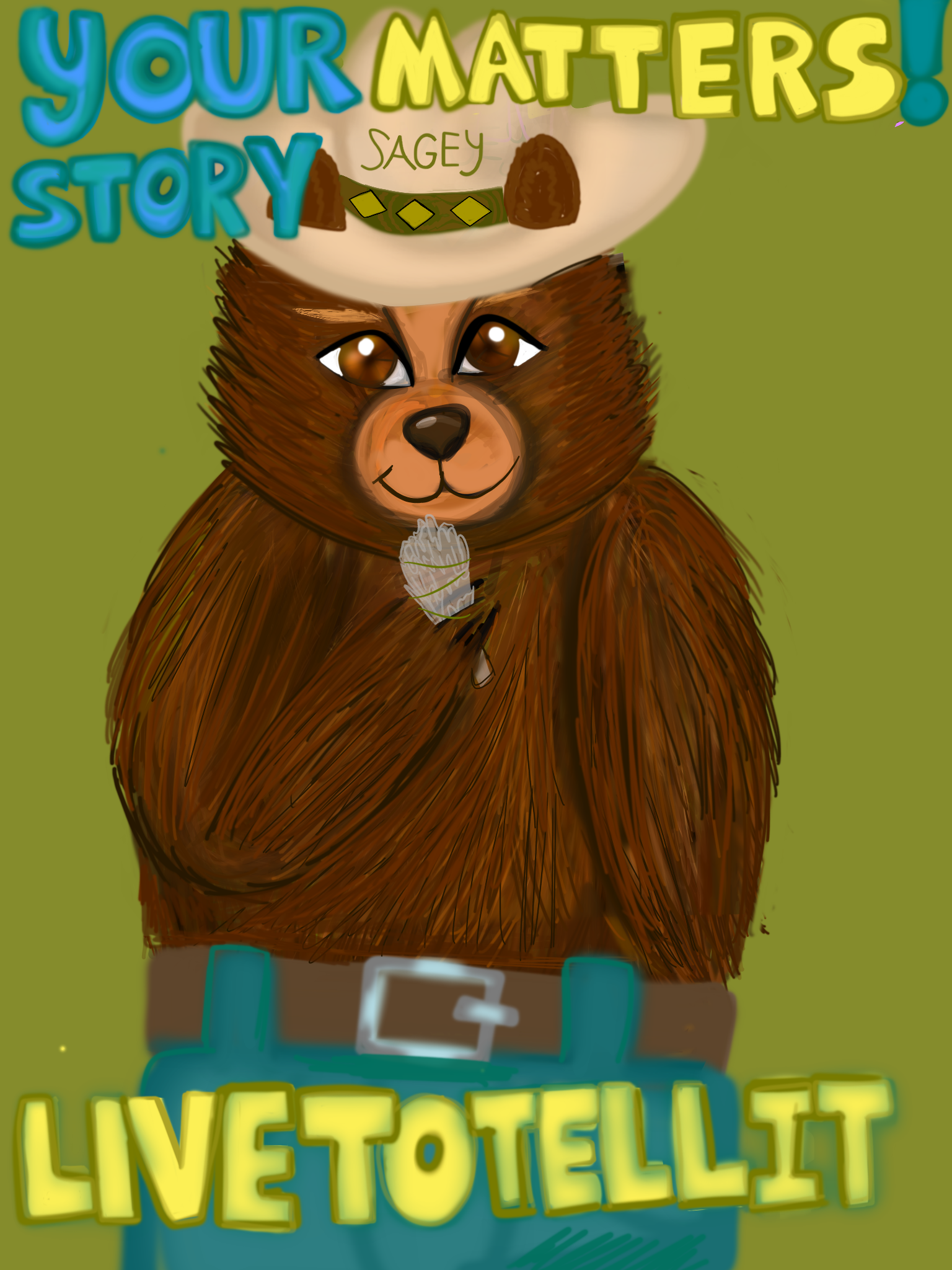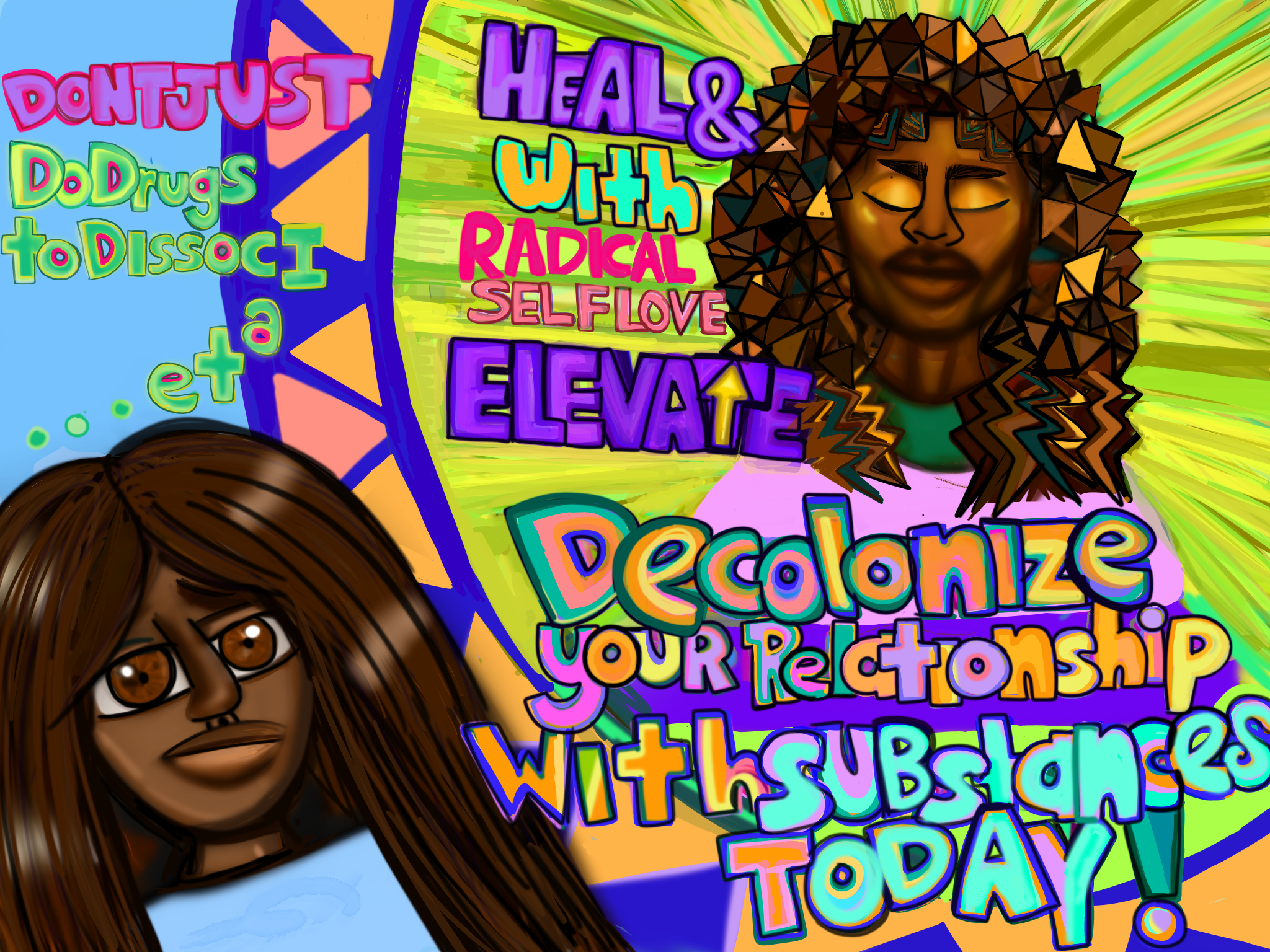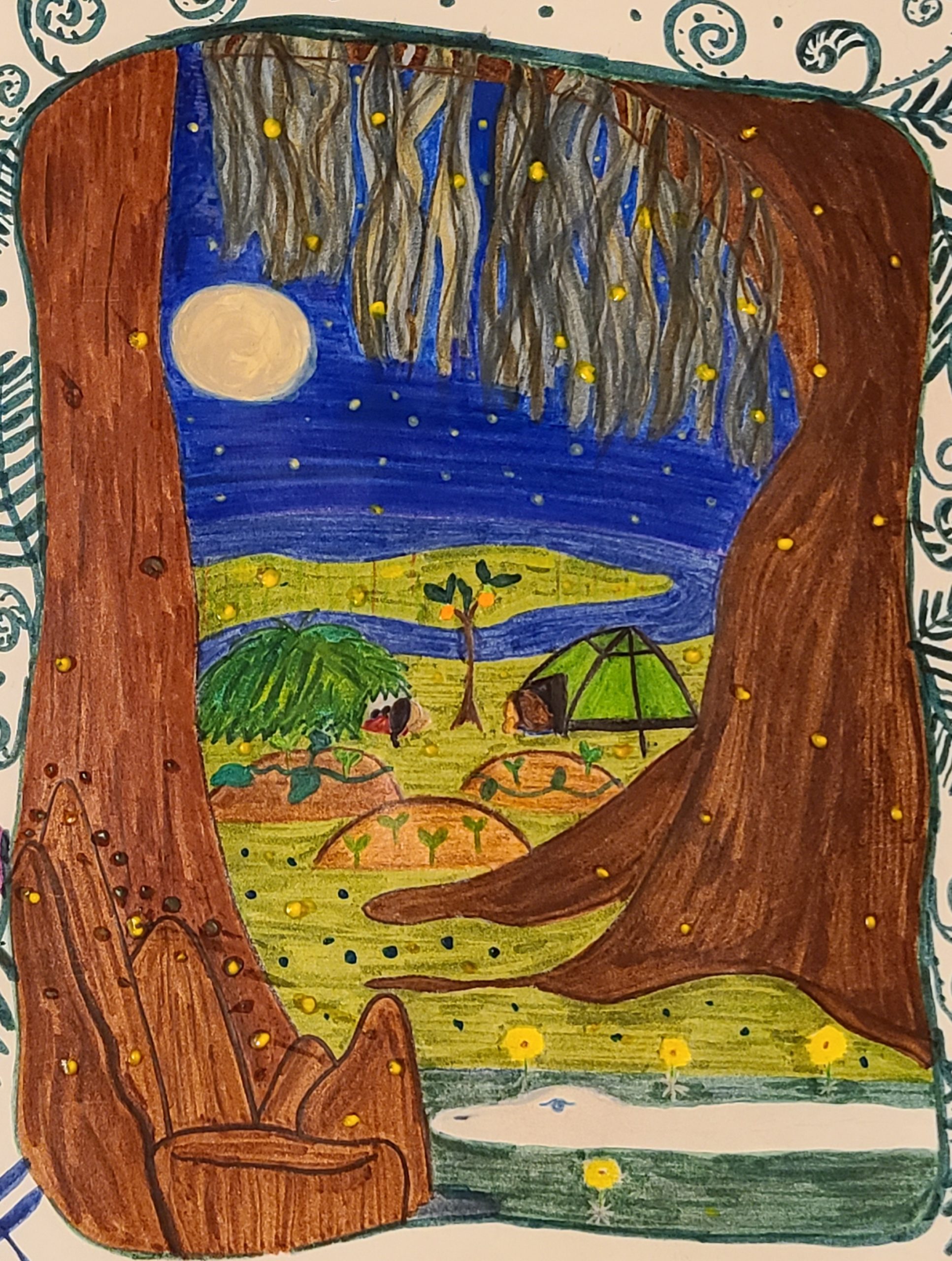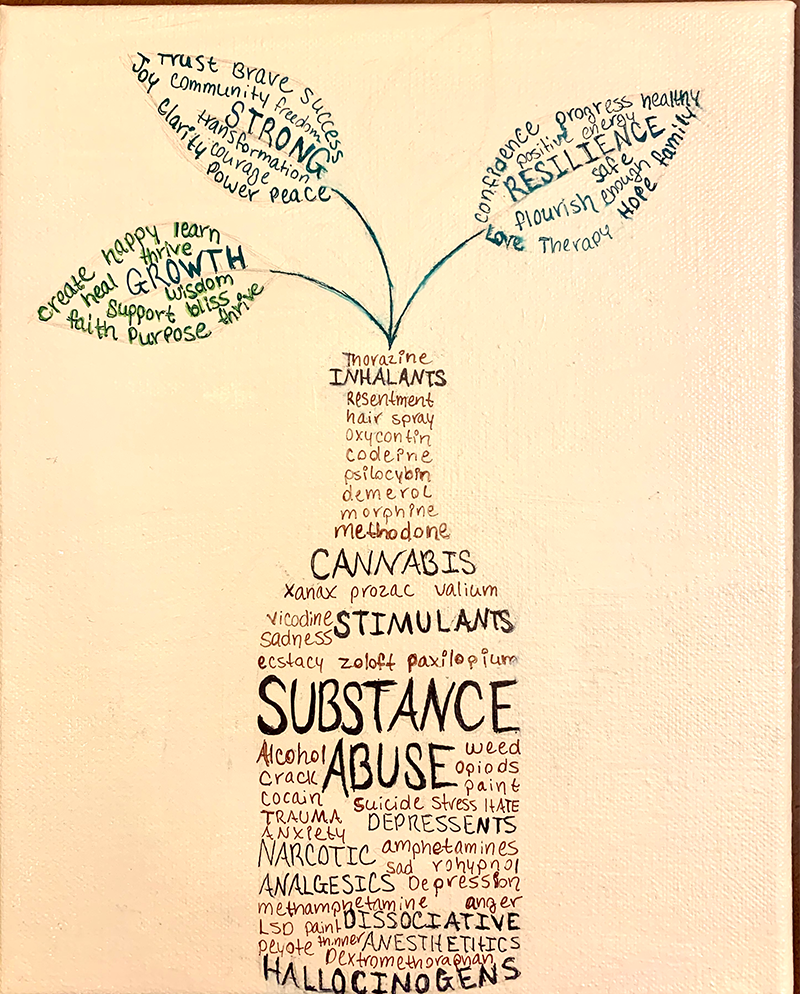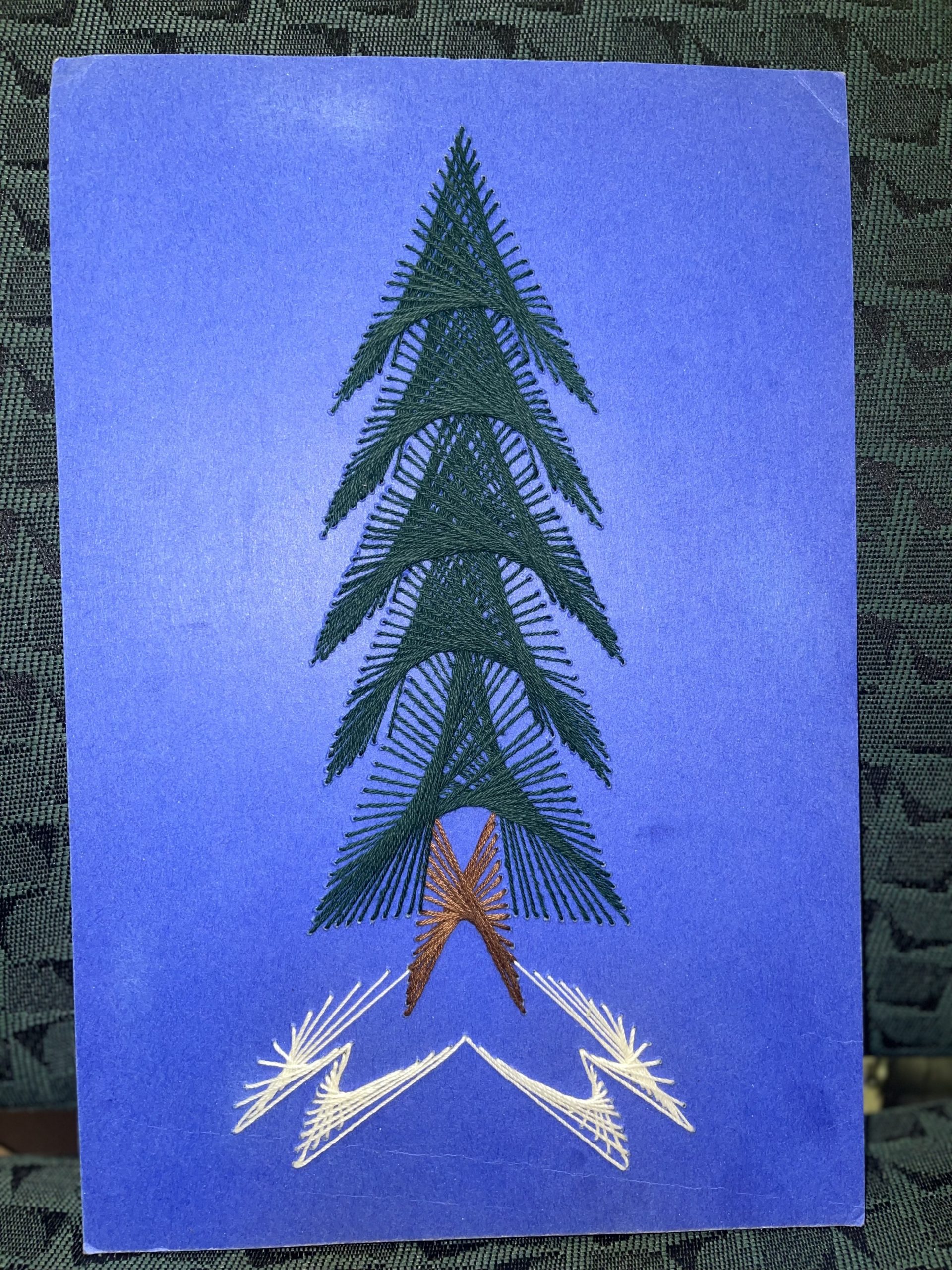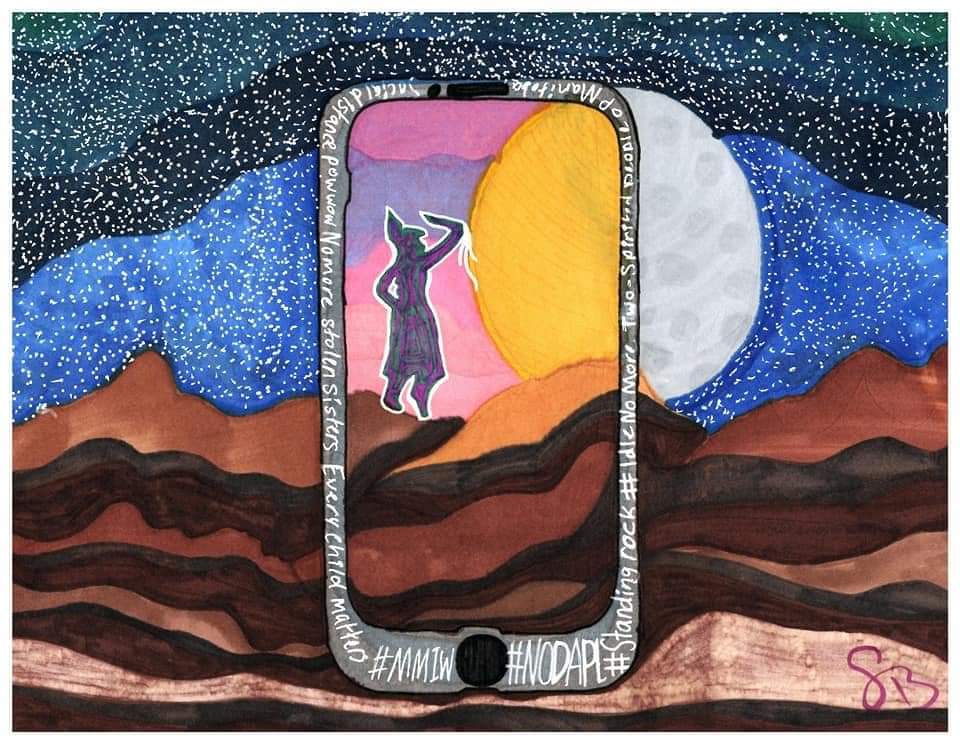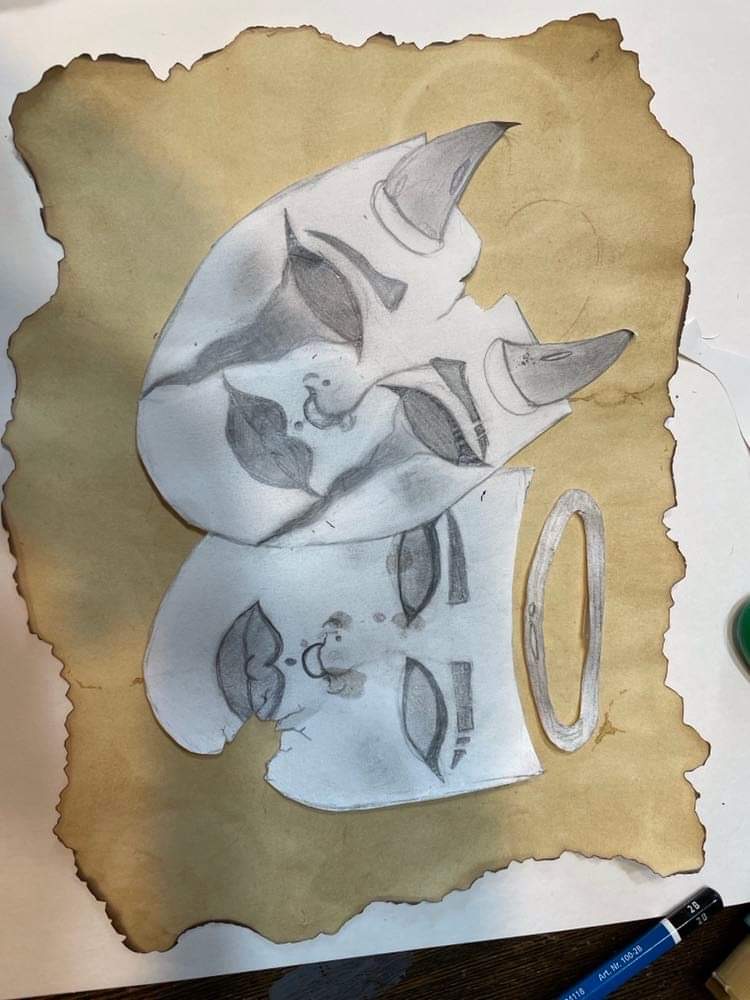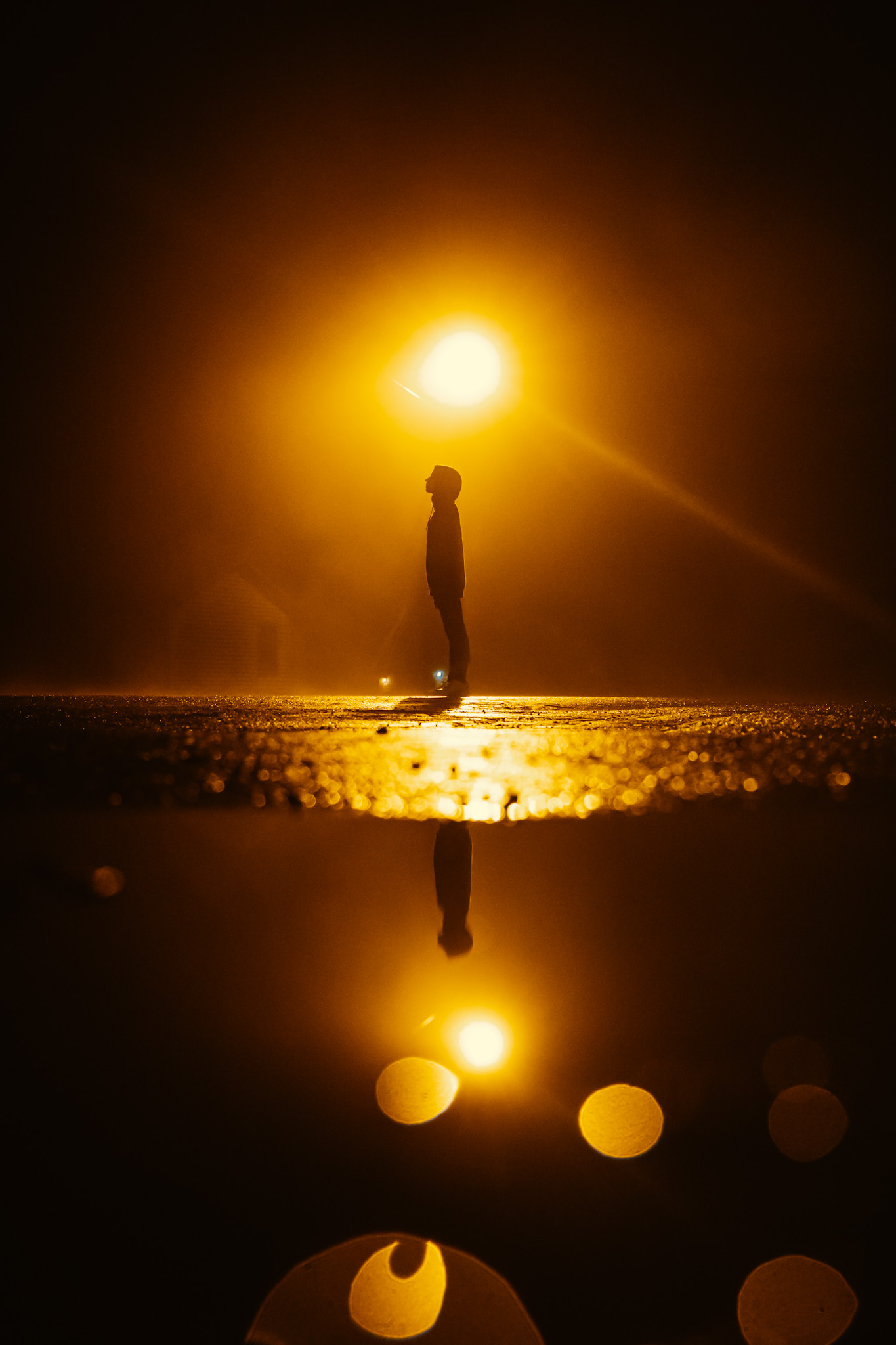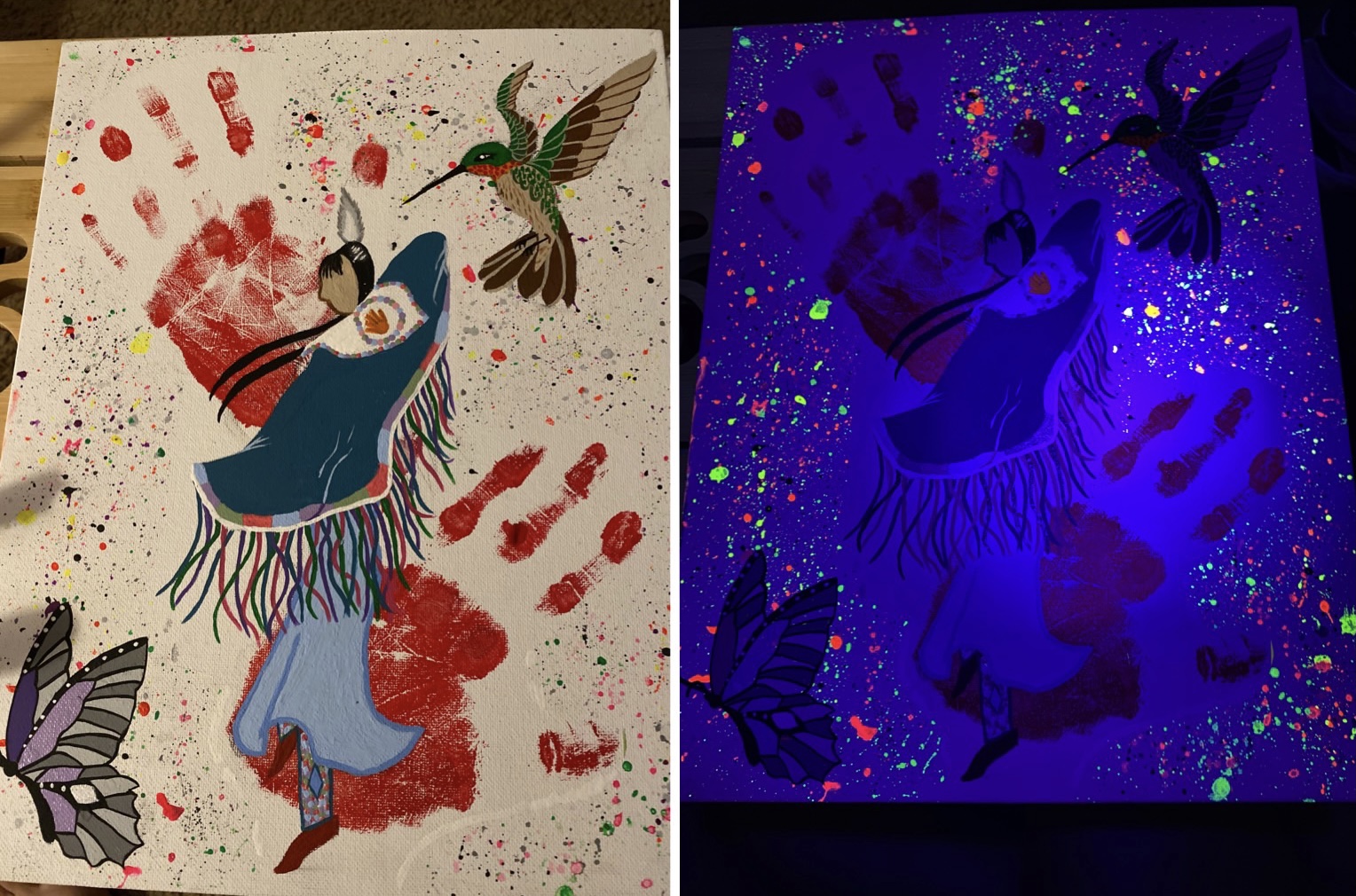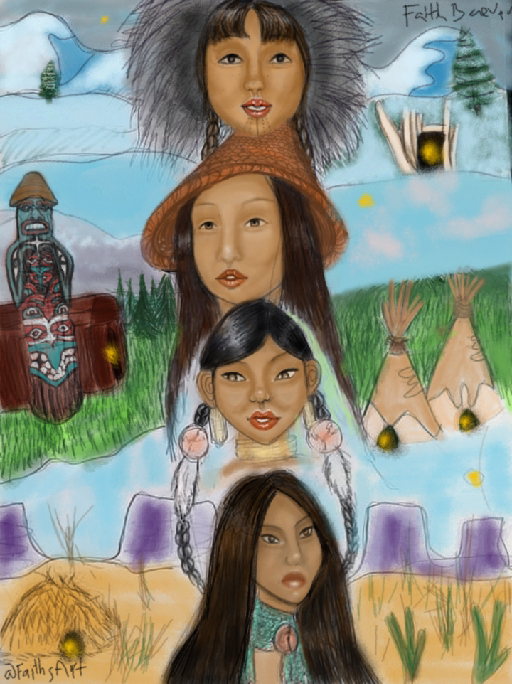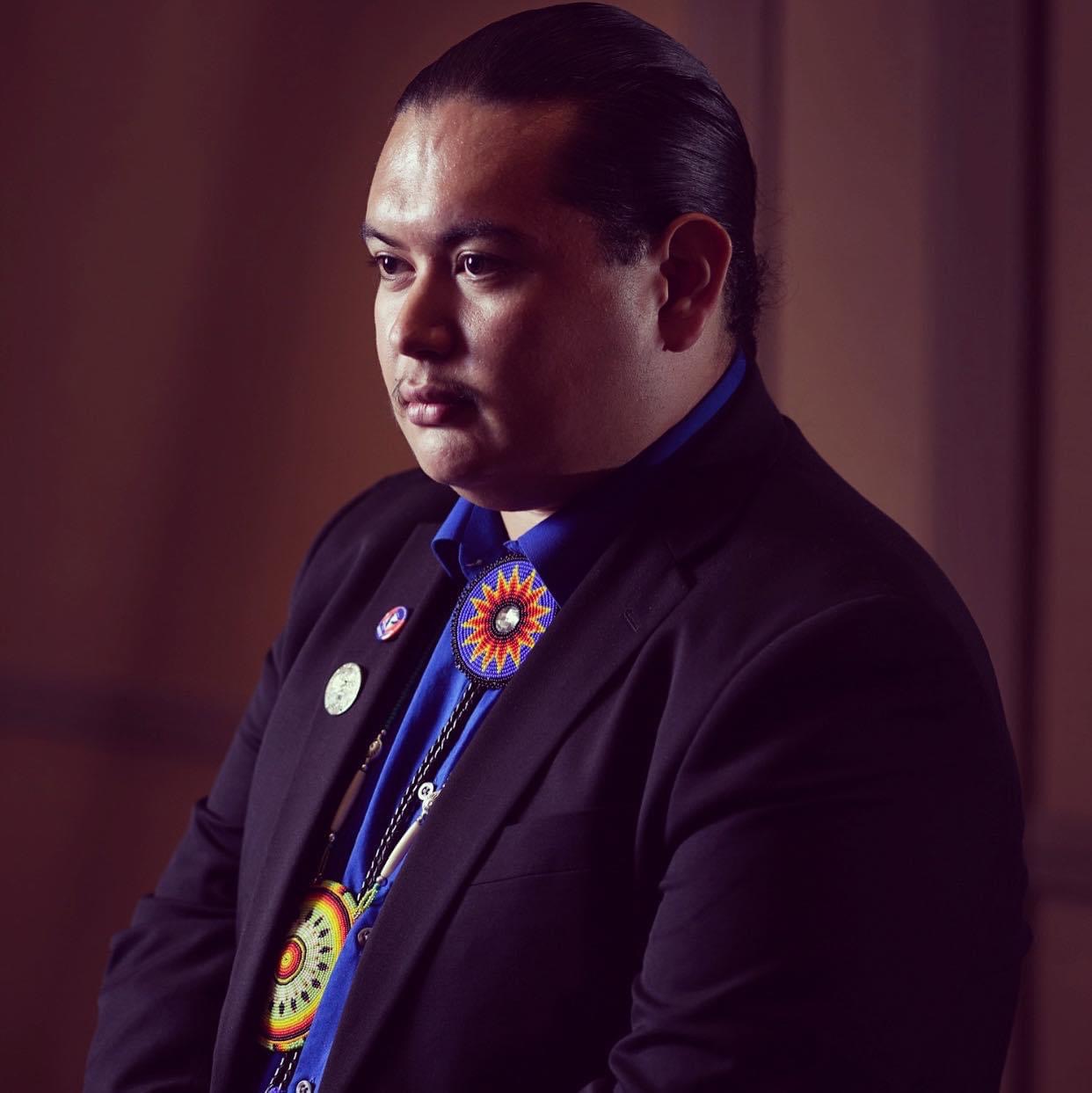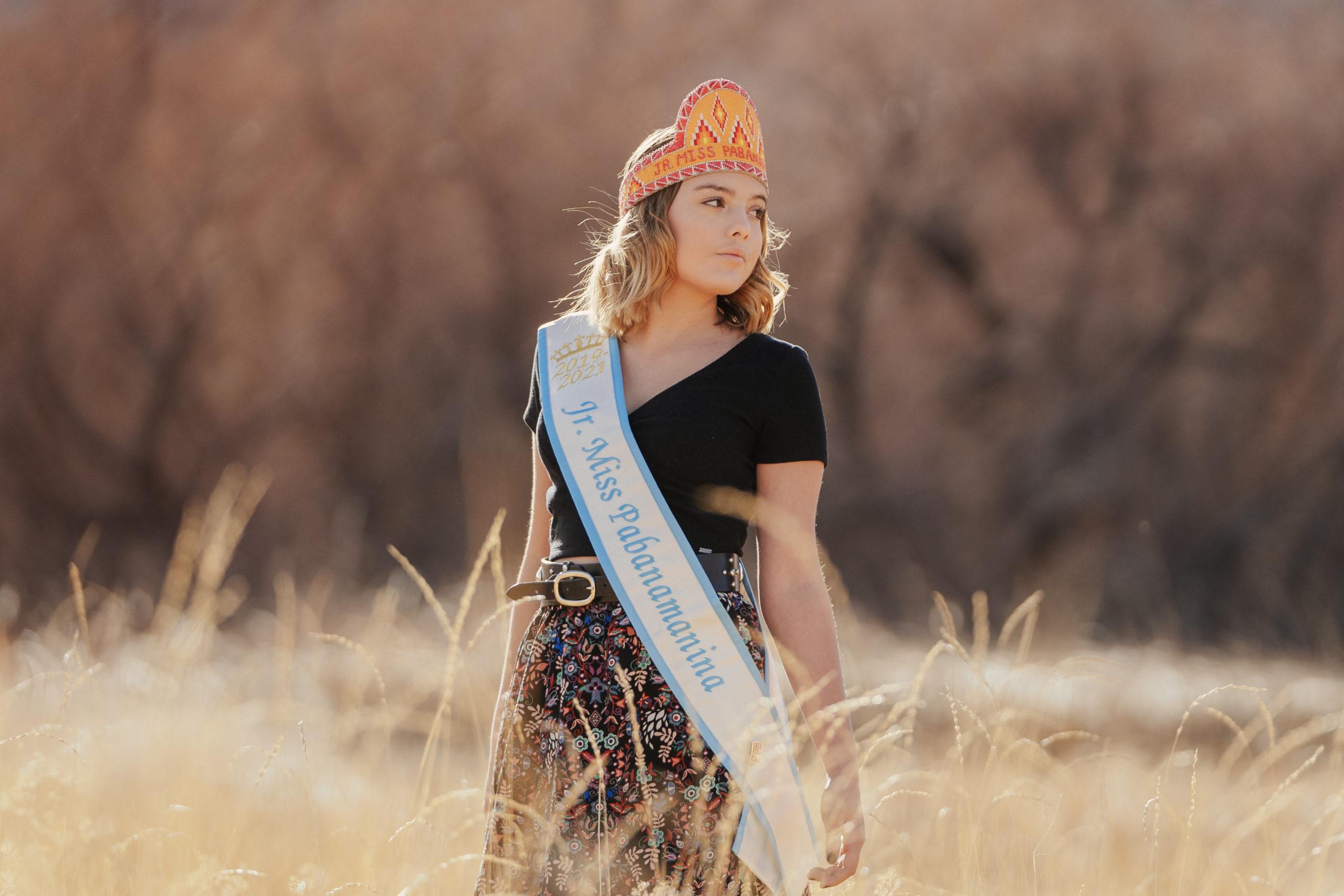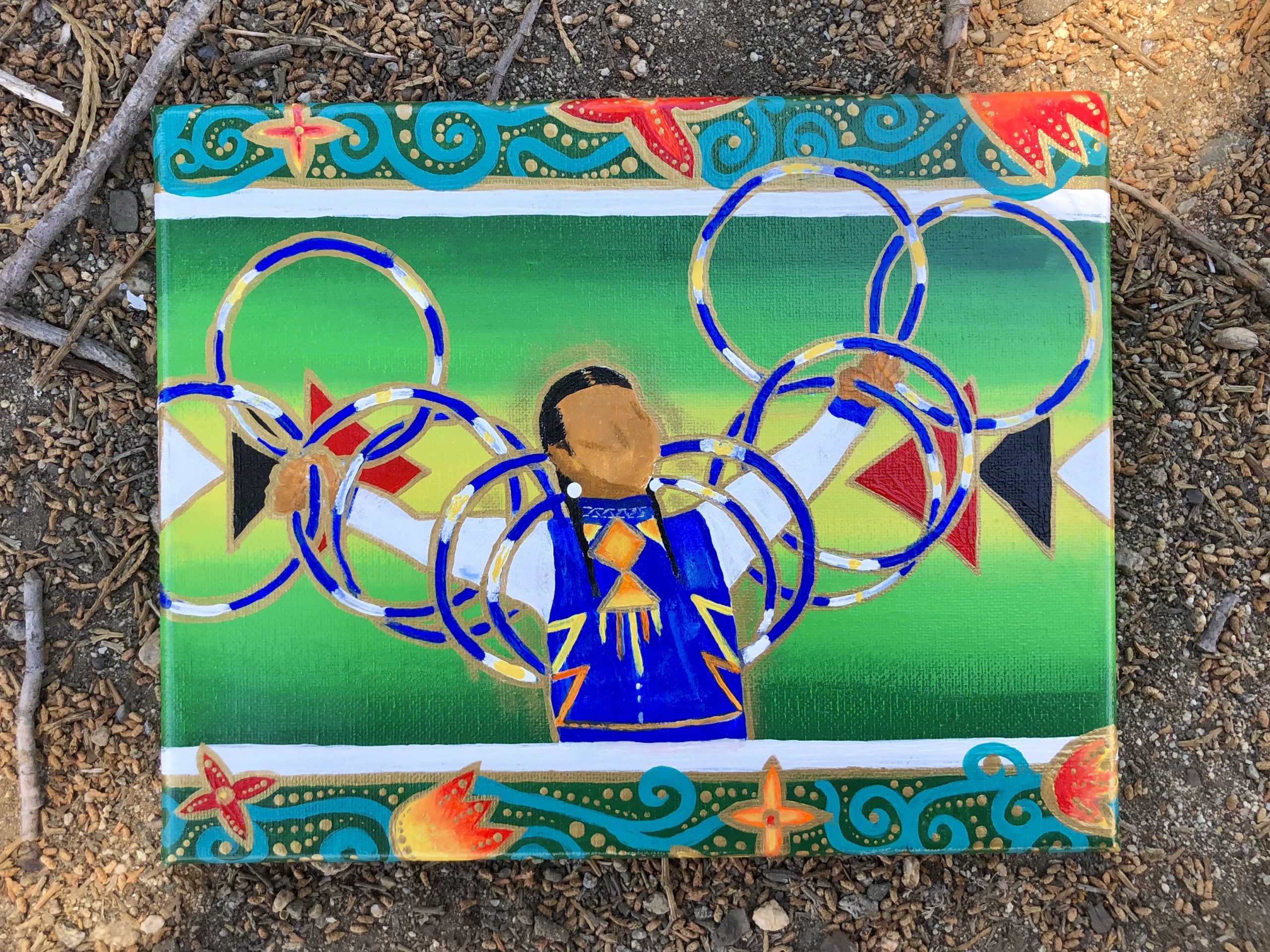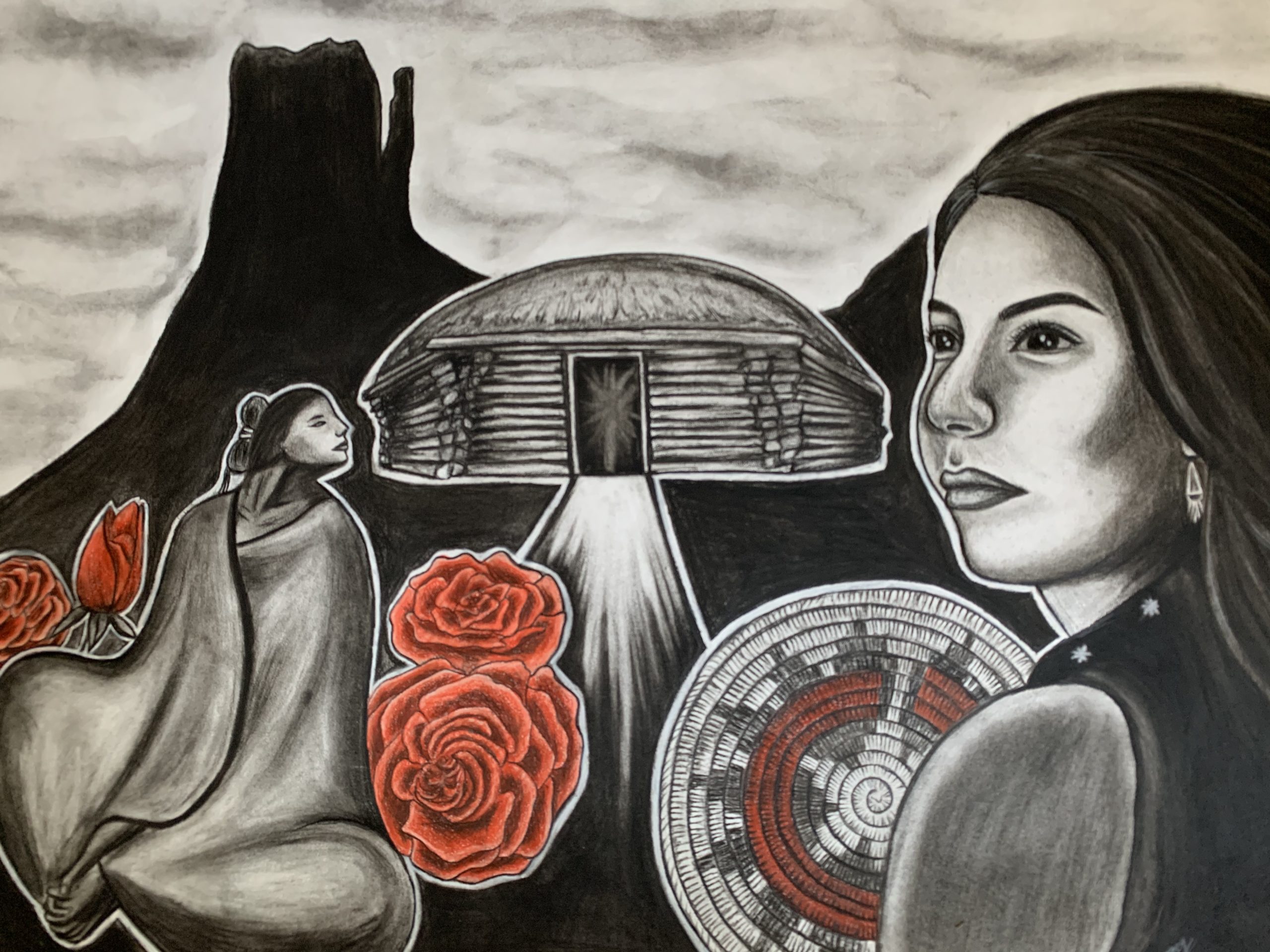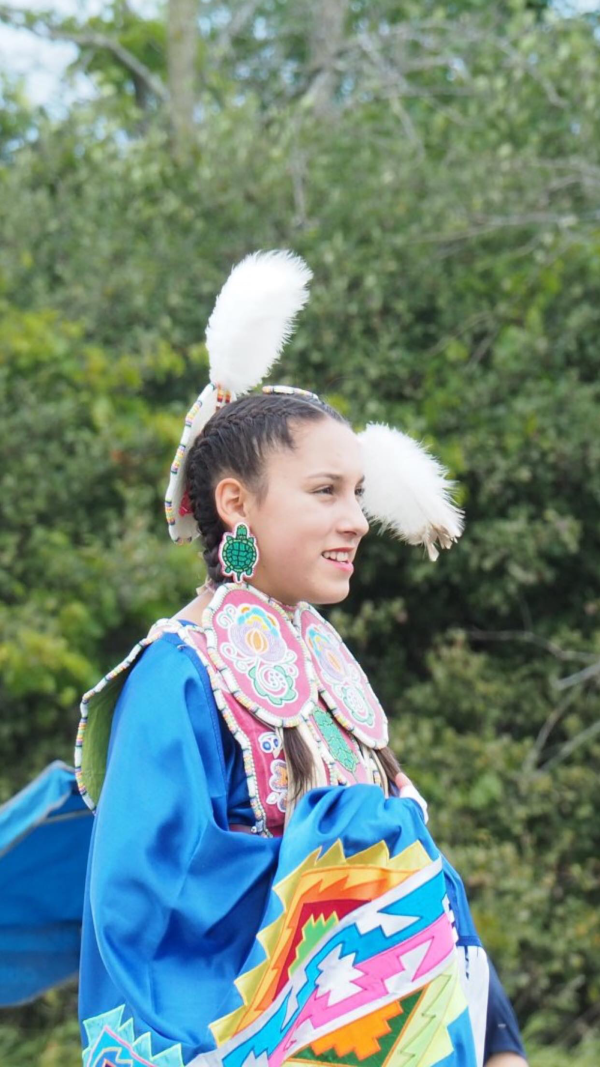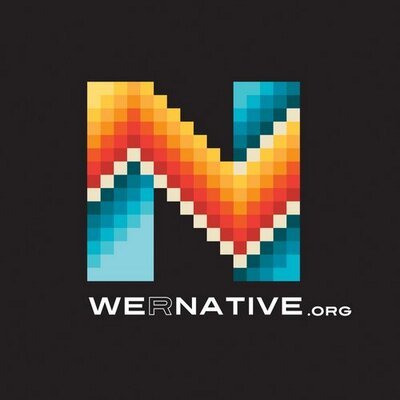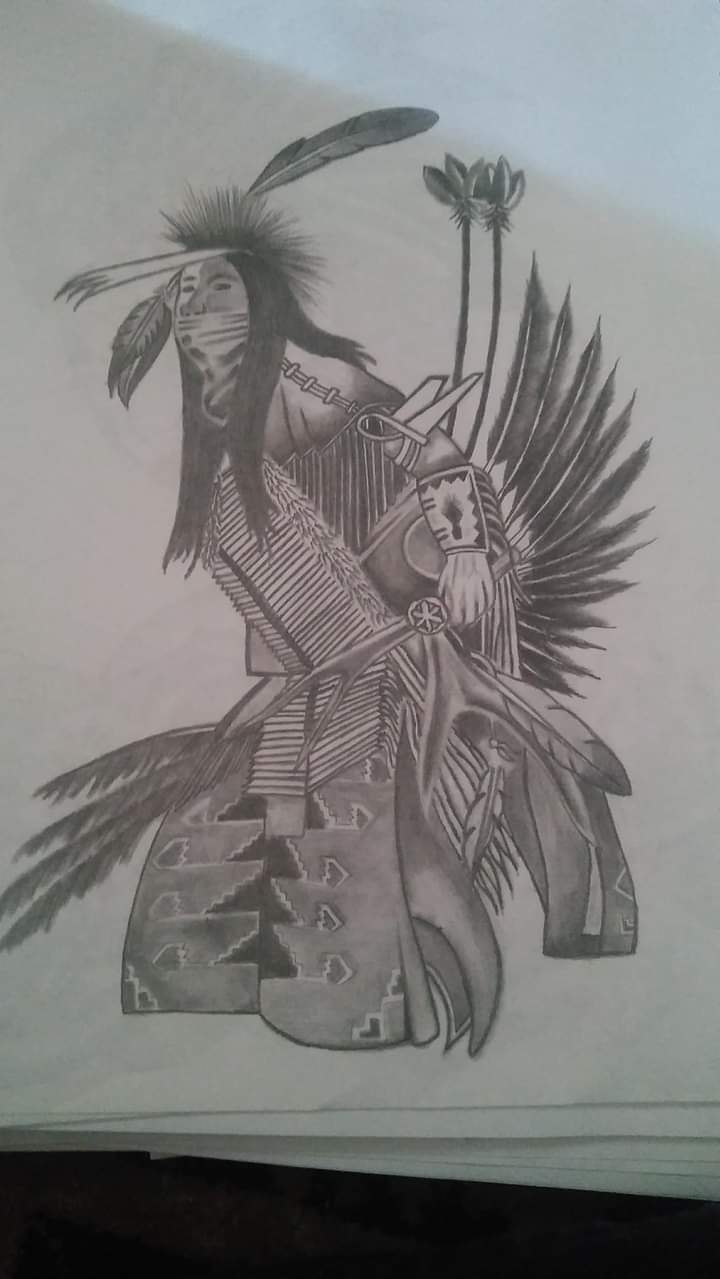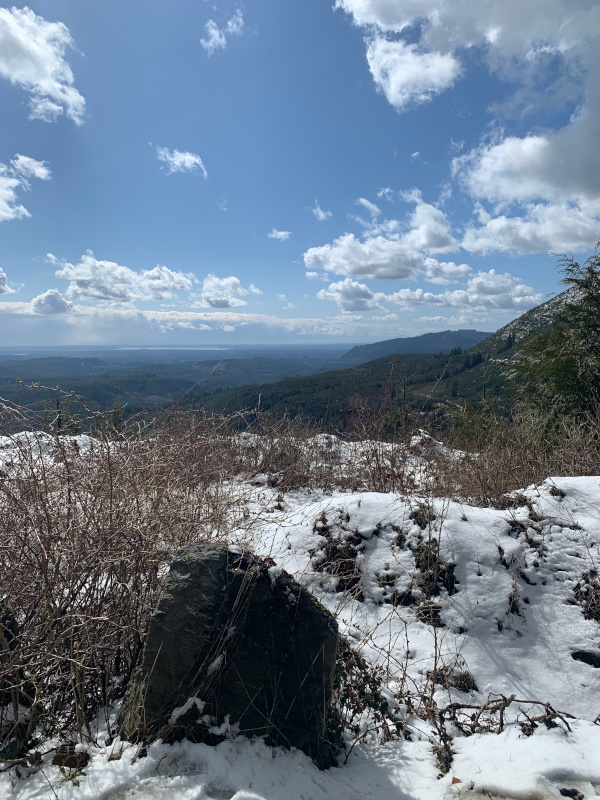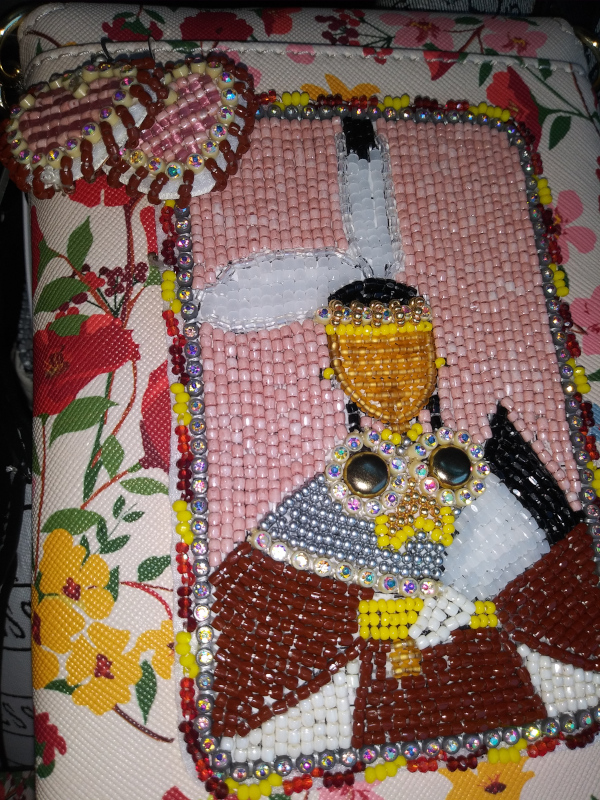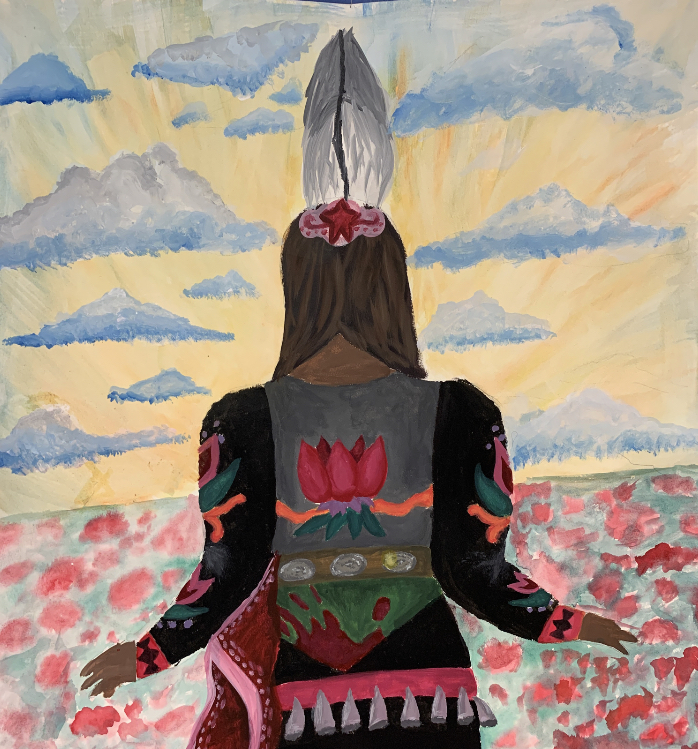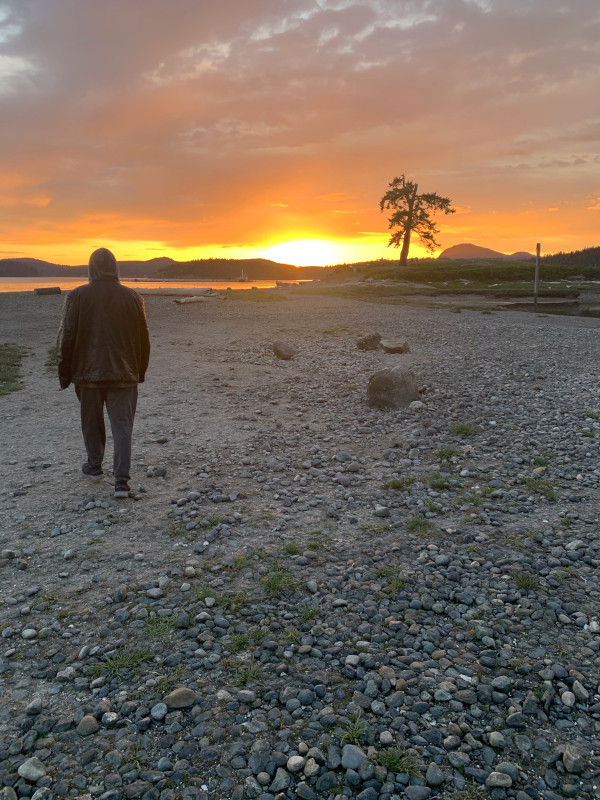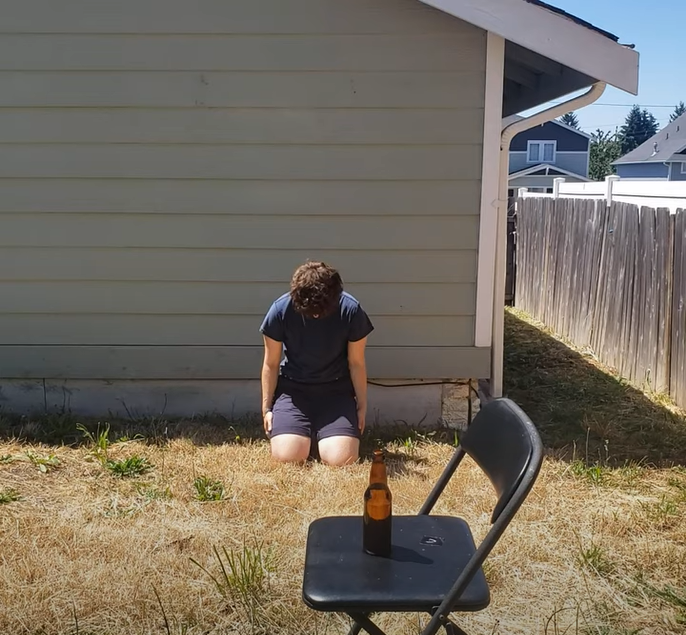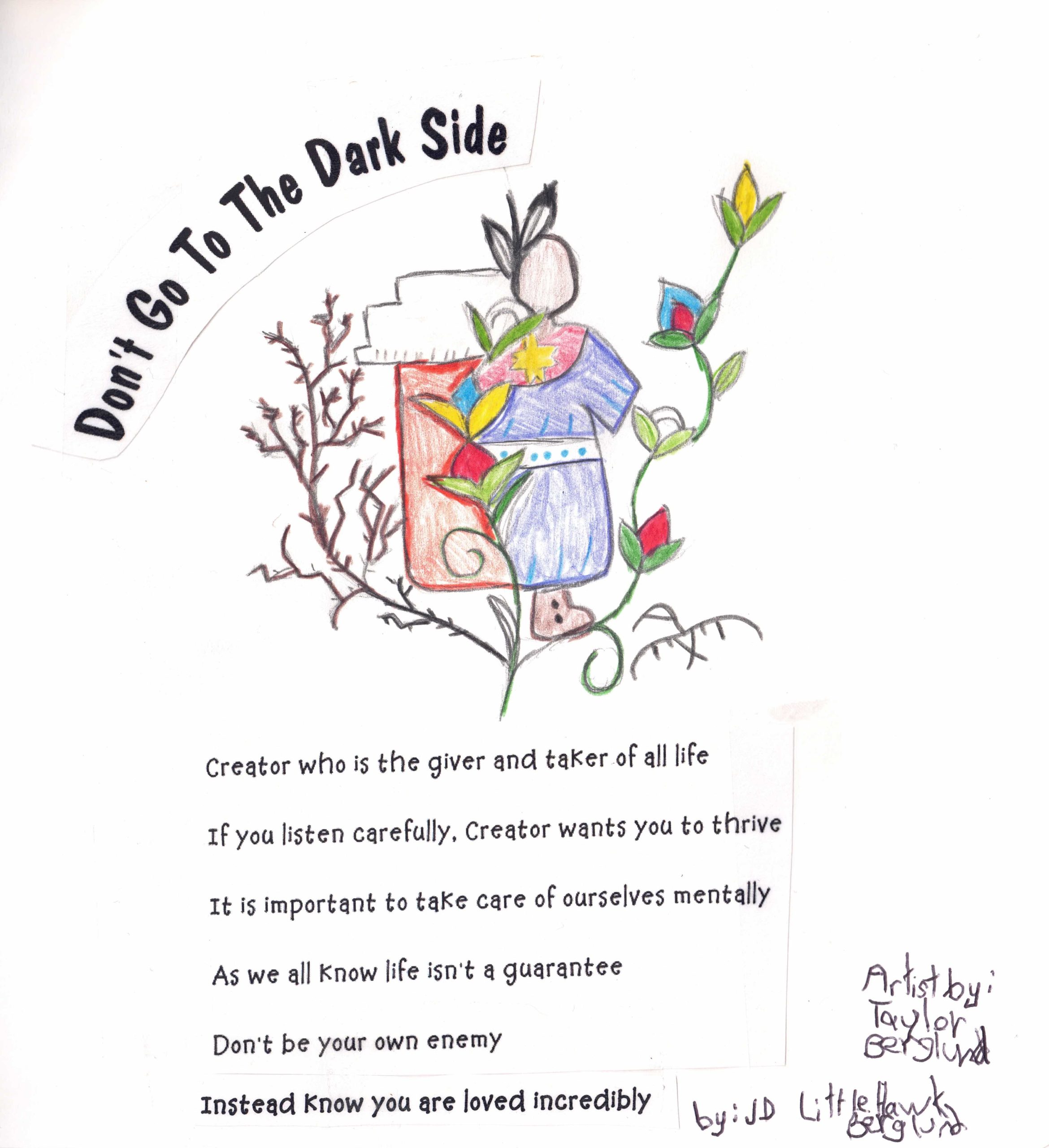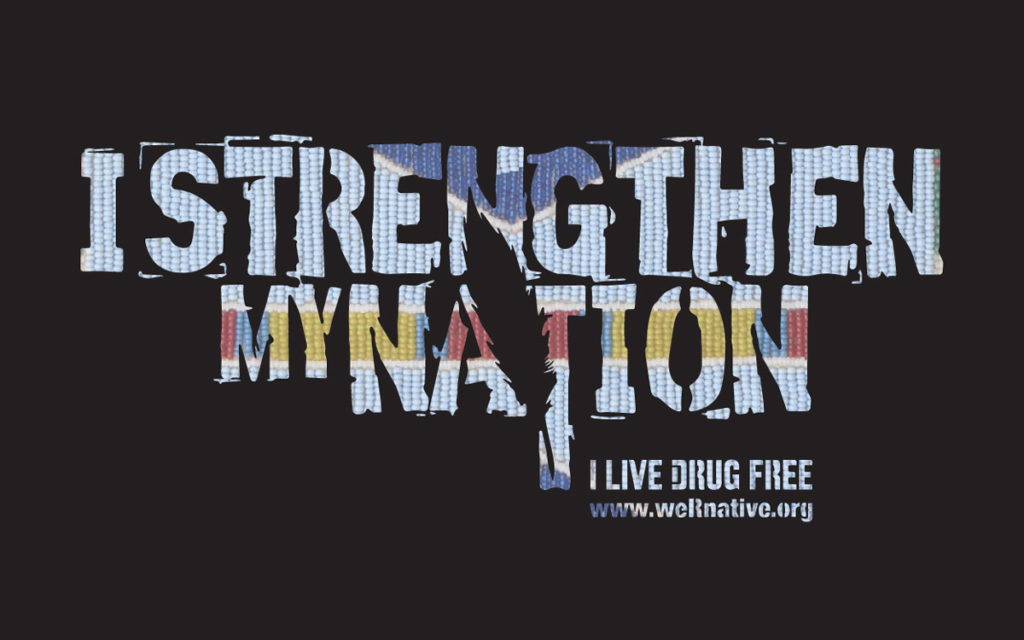
The National Institute on Drug Abuse (NIDA), in partnership with We R Native, hosted two challenge competitions to recognize and draw upon the inherent strengths and resiliencies of Indigenous people and culture that protect against substance misuse. Check out these amazing entries!
The way beadwork can ascend an indigenous person is powerful. From the historical nature of cultural preservation to the extra element of style and fashion, beadwork can uplift and bring forth identity and overall expression. Personalized, the concept that no two pieces are alike leaves room for the most versatile form of Indigenous heritage. A handmade artform, a labor of love, and a reflection of the inner workings of each individual. I have had the honor of learning young in making my own accessories to accompany me on the dance floor. I am proud and have built wonderful connections with peers from all walks of life.
I myself had struggles in life and the art of beadwork has kept me grounded, secure, and focused. I know having the ability to inspire others to combat the many trials and tribulations of life. Resilience and beadwork go hand in hand, having a healthy and positive outlet from trauma, helping heal and process. Any lost individual that can take something from my work is a goal met. If I can help alleviate pain, longing, sadness. If I can inspire progress, compassion, love and community in my pieces, then I have accomplished the tradition of resilience.
River Delta Resilience
Aletu! I'm from the United Houma Nation in southeast Louisiana. This piece is set in the delta I live in and strives to connect the past to the present. Two girls camp among the cypress and live oak trees near the river, watching the stars and fireflies. One is in a traditional palmetto hut, and the other is in a modern tent. A mound garden is growing behind them, and in front a young persimmon tree is fruiting. A white alligator swims in the front. All of the plants represented have important medicinal and/or cultural uses. Throughout my life and in work I do with Native youth, I find that connections with our history and cultural activities provide a source of resilience, practices and knowledge to fall back on in times of trouble or in preparing for our future. I find I'm happiest when I'm out in nature, whether it's hiking trails through the forest, listening to stories around a campfire, climbing the branches of a live oak tree, learning how to plant a traditional food forest and garden, or harvesting medicinal and food plants. These things have given me a healthy outlet during hard times, rather than turning to substance abuse. I tried to depict these many different things in my work.New Life
Generations of my family have called the Catawba Indian reservation home. I have seen first hand the problems and suffering substance abuse has caused to the people and family that live on the reservation, but I have also seen the resilience and ability to overcome these addictions. My artwork depicts the resilience these people have and how they are able to grow from their troubled past and make a new life for themselves.Threaded Tree of Peace
Indigenous communities have suffered from substance abuse for many generations, some involving just alcohol or as far as drugs. Much of these addictions stem from the feeling of loneliness and feeling like you don’t belong at a young age. Something that helps prevent these feelings and these bad decisions down the line is embracing who you are, both culturally and physically.
The tree in my art is the “tree of peace” which represents peace between the Haudenosaunee people. The tree of peace was a white pine tree chosen by the peacemaker which symbolizes unity of the 5 nations, the mohawk, Seneca, Cayuga, Onondaga, and Oneida. Each part of the tree represents or symbolizes an important element of unity in the confederacy. For example, the pine needles of the tree grow in bundles of 5 representing the unity of the 5 nations and the roots grow the 4 directions (north, west, south, east) which represent the paths for our future brothers and sisters. On the other hand, the tree also was a symbol of solitude among chiefs and allowed these chiefs to never “die”, their stories and titles would be passed down to future generations forever.
My artwork represents peace and indigenous communities coming together to become stronger to prevent substance abuse in future generations. The thread in my piece represents communities coming together to form something strong and beautiful. Not only does the symbol itself show the tree of peace but it also shares some of its meaning, for example, The roots represent the paths for future brothers and sisters just like how the tree of peace does. Our ancestors laid out these paths for us to keep peace and culture going. My artwork not only symbolizes coming together, forming something beautiful, but it symbolizes carrying on what our ancestors wanted which was for us to sustain the peace they built in our communities and using it as an advantage to make better decisions like preventing substance abuse.
Substance abuse is a problem for most that can’t be resolved easily, for our indigenous communities it is easier to resolve. Our communities not only have amazing culture but also have amazing diversity to make everyone feel involved and like they belong. us embracing ourselves culturally and physically can prevent bad decisions like substance abuse down the line.
Digital Landscape
As an urban Native, with deceased parents and grandparents, I use my phone to connect with my extended family in Oklahoma, Nebraska, and Ohio. With technology I am no longer the lone Native in my physical world. I can learn about my culture, traditions, and meet other Natives like me. Alcohol addition ruined many of my relatives lives, and took my mother’s life. When I am in a dark place and feel isolated I can digitally connect with others to remind myself that I am not alone and I come from a long line of warriors. I see technology as a digital landscape that can create a sacred space for Native people to gather. This landscape is represented in my drawing. In my drawing I used a filter on the phone screen to represent the beauty that exists even during the darkest times. The phone represents our ability to create a community with technology. We thrive through our gatherings. The digital landscape allowed us to stay connected during covid through Zoom and groups like the Social Distance Powwow. The digital landscape helps us share our issues and process our grief. Native people joined together to fight for our existence through movements like #EveryChildMatters, #MMIW, #IdleNoMore, and #No-DAPL. I represent these movements on the iPhone case. The jingle dress dancer is a universal figure for healing, strength, resilience, and connection. The Digital Age created an Indigenous landscape that united our people and eliminated borders. Technology helps create communities to share our culture and reclaim our identity. The digital landscape provides a way to connect, learn, reduce our isolation, and express ourselves. The government separated Indigenous people through international borders, reservations, boarding schools, and relocation. The digital age allows us to reconnect. Social media and technology helps connect Native people from all generations and geographic locations to share our stories, causes, culture, traditions, grief, and talents. We can dance for healing, fight racism, and make our voices heard.Beginning Alone
My name is Noah Singer, I am part of the crow nation in Montana, I am from Wisconsin but my dads side of the family is living out in Montana on reservation land. I go out there at least twice a year to visit and stay connected to the community and culture. My original photograph was taken in Pewaukee Wisconsin on a rainy night recently, while taking the picture, substance abuse wasn’t in my mind, but as time went on I thought about how people I know who are both young and old struggle with abuse, and a lot of people that I have talked to say that they feel alone when going through the abuse, even if they really aren’t. Here I captured a dark, empty and almost unreal setting that people who struggle with substance abuse explain how they feel. When I imagine what they feel I picture someone walking alone in a setting like this, surrounded by anxiety and the unknown because they cannot see further. This also has another story to it. I believe that this can represent someone who is putting substances behind them and starting clean, for someone who is used to the high and comfort of a foreign substance, letting go is scary and it feels like you are alone when really it is just the beginning, and soon the rainy, cold dark night will turn into day and that rough patch will be behind you. Walking alone is scary, people who struggle might feel alone even when they really aren’t, which is why we need to understand that we must take the time to be there and help our communities that struggle to be there and help, even in the darkest of times.Oyúškeya Únpi
Throughout my life I had been trying to figure out who I was. My parents always told me that we were indigenous, but I didn't want to be a part of it. I am now reconnecting and gaining more and more knowledge about my heritage. Family members I had, died from substance misuse and it really impacted me. So when I was 13 I had created a program called SASI (Sweet and Sober Individual) to try and promote a healthy lifestyle in the community. Now, I create art to show problems we as a community go through. In this piece, I have the red handprints for MMIW. This is a huge problem in AI/AN culture, especially with those who use alcohol and drugs. The dancer represents our culture and how we can reconnect and the animals represent freedom.Home
I believe that our homes and our connection to our lands and culture will break us from our toxic cycles we continue to make today. A lot of us struggle with homelessness and displacement a lot of my own grandpa's and grandmas struggled like that and never got help and ended up dying never knowing where they come from or who their people are. I wanna show us the beauty of our people when we don't have to worry about homelessness or don't have to worry about somebody telling us to not pray. One day I hope this is the future.A Commitment to Current and Future Generations
I strengthen my nation by being a humble servant to Native youth and Indian Country. By being a humble servant, I serve as Co-Vice President of the National Congress of American Indians Youth Commission and Secretary/Northwest Regional Representative to the United National Indian Tribal Youth, Inc. Executive Committee — advocating for our youth on a local, regional, national, and international level. As the original stewards and owners of these lands, we have a multi-generational, ancestral duty to take care of our land and our people. This multi-generational, ancestral duty has been passed down, generation-to-generation. We, the Native young leaders of today, have inherited immense and vital duty — it is up to us to pass down that baton of leadership just as our mentors did for us. It is time to bridge the disconnect between tribal leadership and Native youth leadership to work in a unified effort to assure the health, safety, and prosperity of our people and future generations.Representation
I strengthen my nation by giving of my time and volunteering at our tribal community events, as Jr. Miss Pabanamanina 2019/2021 I feel it is important to set a good example and represent my title well. I am also a member of the Bishop Tribal Youth Council a UNITY affiliated youth council I serve as the secretary and I believe as a youth leader we need to be involved and live a good clean lifestyle. I enjoy basketball and softball and going to powwows my dance style is Jingle. I will continue to work hard to show youth to be a active and involved our representation matters.Our Future, In Our Hands
My whole life growing up revolved around the Powwow arena, it was the only lifestyle I knew. I’ve been dancing since I was able to walk, and traveling from powwow to powwow at a very young age. Across Indian Country I have met and became close with so many different people and have been taught many great things. I’ve been inspired by many to constantly expand my knowledge and try to absorb as much as I can from a very young age. This has brought out the creative side of me. I began painting at a young age, and stopped for many years. I couldn’t find motivation or inspiration, that’s when i started painting what I know best, which is the powwow scene. As soon as I started to create art from past memories, it sparked a light in me. This particular piece was inspired by a good lifelong family friend, Moontee Sinquah, a world champion hoop dancer. I have known Moontee for as long as I could remember and the only energy I have every received from him was strictly positive and happy energy. In this piece, the emotional depiction is very strong and resilient. When I look at my piece I visualize someone who has been able to overcome obstacles and battles within themselves. I believe the piece is a powerful depiction of how our youth can chose the path of knowledge in culture and power over drugs and pain, along with generational patterns of abuse of drugs and alcohol. Our people deserve better and will always deserve to not have to face battles like this, but we do and it’s the reality of what our people have to deal with. It’s having great people to look up to and help lead you to the right path through encouragement and leadership. Through our cultural practices and traditional ways, we can overcome many battles within ourselves and the outside world. It’s up to us though if we want to take that path, but the help of amazing others is always a help.Identity
For my drawing class, we had to incorporate various elements into one big drawing. I decided to focus on my culture which makes up who I am as an individual. I find so much beauty within my culture and traditions, so I included a hogan, a navajo wedding basket and myself. Indigenous people are given the wrong stereotype that we are alcoholics or drug addicts. Without colonization, we would be prospering amongst ourselves and embracing our beautiful cultures. This piece embraces the beauty I see within our identity as a Dinè woman.I Am Resilient
Hello, My name is Makayla Stevens and I am part of the Saginaw Chippewa Indian Tribe, I am 16 years old and I am entering this amazing contest in hopes of showing not only local native youth but youth over the world that there are so many amazing opportunities they can receive and participate in that don't involve drugs. Growing up in this small native community has taught me so much about the negative effects of using drugs, the drug epidemic has taken a huge toll with in my own community, It's about once a week we hear about a young person passing away from an overdose, the age seems like it keeps getting younger and younger. I personally feel I have a tie to the drug epidemic and how it affects families: when I was younger my biological family regularly used drugs which caused behavior changes and alot of abuse and neglect, this had went on for years to the point where my two younger siblings and I were put up for adoption, that was very hard for me to get over, but luckily a my sisters and I were adopted by a lovely family where I have some pretty amazing opportunities, words can never express how grateful I am for my family, they don't use drugs, and they join our community in trying to lower drug rates, not going to lie being adopted has its negative effects but it also has created this strength inside me that keeps me seeking for opportunities and not turning to drugs. I think that my fine arts keeps me from wanting to turn to drugs. When I sing and when I create I feel this sense of peace and I think there are so many other opportunities people can enjoy when they are not actively using drugs. I hope my piece of art can reach many, but if it just reaches one person, I would make me so happy. I feel that I have a great connection within my knowledge of Native American culture, I am an Indigenous dance teacher, and I currently for the past year have held a job at “The Ziibiwing Cultural Center'' where I teach and instruct about the Native American culture, I teach all types of age groups including college aged as well as kindergarten. This job has been such a blessing and it taught me so much about my culture and my connection to indigenous arts. I feel that if my piece of art can be showcased it will show other native youth what they can achieve I hope to be a leader and someone to look up to with in out native youth. To be a part of this amazing opportunity means so much to me, this year has been a lot of students and small incentives really help a lot. Thank you once again for the opportunity, I hope you guys love my art as much as I do, I also hope that my story can be shown to other native youth and hopefully encourage resilience as well as that indigenous strength.